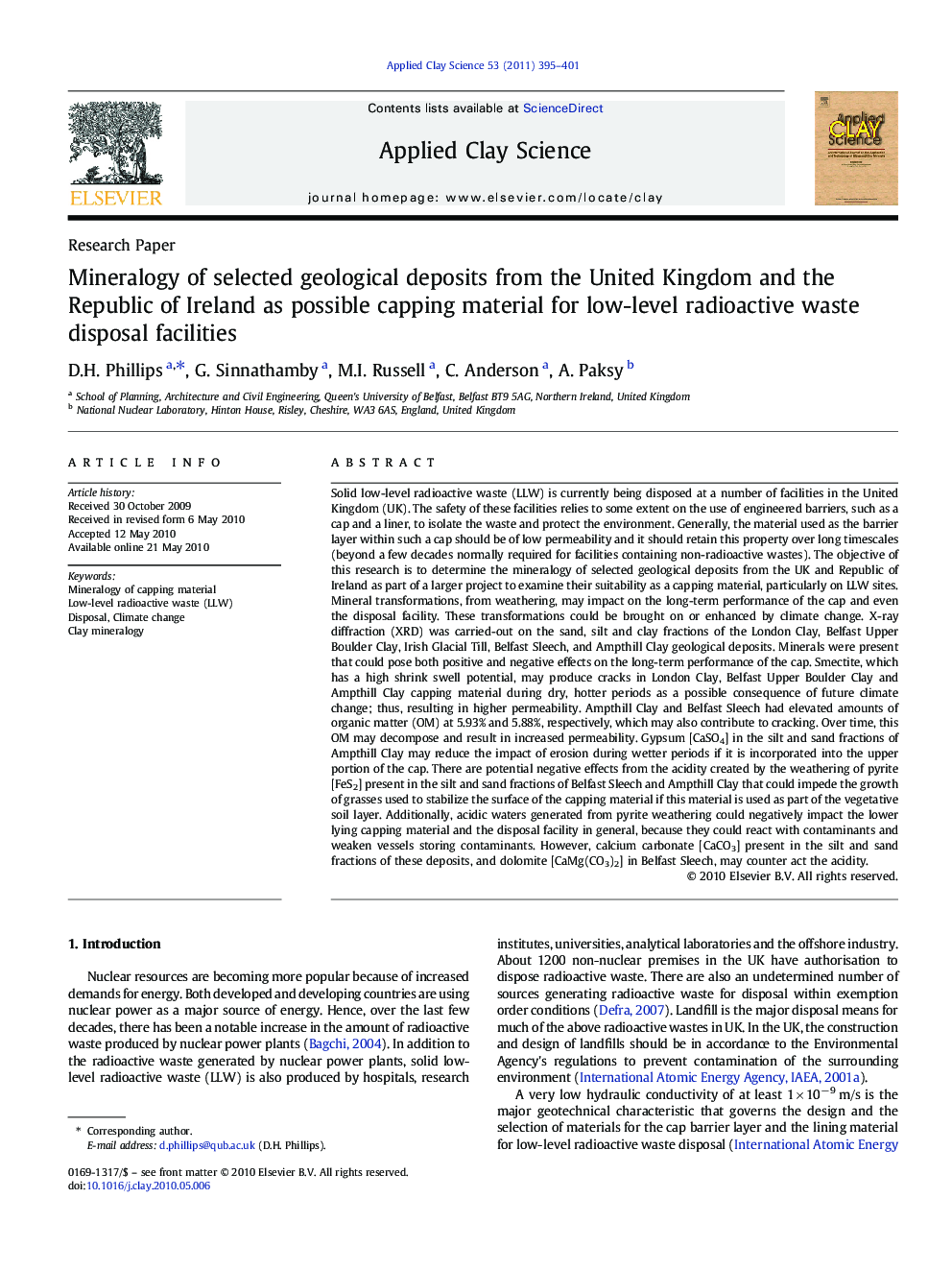| کد مقاله | کد نشریه | سال انتشار | مقاله انگلیسی | نسخه تمام متن |
|---|---|---|---|---|
| 1695449 | 1011860 | 2011 | 7 صفحه PDF | دانلود رایگان |

Solid low-level radioactive waste (LLW) is currently being disposed at a number of facilities in the United Kingdom (UK). The safety of these facilities relies to some extent on the use of engineered barriers, such as a cap and a liner, to isolate the waste and protect the environment. Generally, the material used as the barrier layer within such a cap should be of low permeability and it should retain this property over long timescales (beyond a few decades normally required for facilities containing non-radioactive wastes). The objective of this research is to determine the mineralogy of selected geological deposits from the UK and Republic of Ireland as part of a larger project to examine their suitability as a capping material, particularly on LLW sites. Mineral transformations, from weathering, may impact on the long-term performance of the cap and even the disposal facility. These transformations could be brought on or enhanced by climate change. X-ray diffraction (XRD) was carried-out on the sand, silt and clay fractions of the London Clay, Belfast Upper Boulder Clay, Irish Glacial Till, Belfast Sleech, and Ampthill Clay geological deposits. Minerals were present that could pose both positive and negative effects on the long-term performance of the cap. Smectite, which has a high shrink swell potential, may produce cracks in London Clay, Belfast Upper Boulder Clay and Ampthill Clay capping material during dry, hotter periods as a possible consequence of future climate change; thus, resulting in higher permeability. Ampthill Clay and Belfast Sleech had elevated amounts of organic matter (OM) at 5.93% and 5.88%, respectively, which may also contribute to cracking. Over time, this OM may decompose and result in increased permeability. Gypsum [CaSO4] in the silt and sand fractions of Ampthill Clay may reduce the impact of erosion during wetter periods if it is incorporated into the upper portion of the cap. There are potential negative effects from the acidity created by the weathering of pyrite [FeS2] present in the silt and sand fractions of Belfast Sleech and Ampthill Clay that could impede the growth of grasses used to stabilize the surface of the capping material if this material is used as part of the vegetative soil layer. Additionally, acidic waters generated from pyrite weathering could negatively impact the lower lying capping material and the disposal facility in general, because they could react with contaminants and weaken vessels storing contaminants. However, calcium carbonate [CaCO3] present in the silt and sand fractions of these deposits, and dolomite [CaMg(CO3)2] in Belfast Sleech, may counter act the acidity.
Journal: Applied Clay Science - Volume 53, Issue 3, September 2011, Pages 395–401